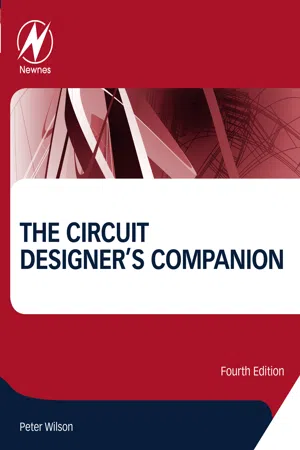
- 496 pages
- English
- ePUB (mobile friendly)
- Available on iOS & Android
The Circuit Designer's Companion
About This Book
The fourth edition of this classic work on circuit design gives you the understanding and practical know-how to produce optimized, reliable, cost-effective electronic circuits. It bridges the gap between the theoretical learning that most university courses provide and the practical knowledge and application that comes from years of experience. Topics covered include analog and digital circuits, component types, power supplies and printed circuit board design, plus new coverage of the latest advances in electronics since the previous edition published.
The Circuit Designer's Companion is ideal for Professional electronics design engineers, advanced amateur electronics designers, electronic engineering students and professors looking for a book with a real-world design outlook.
Updated with new material on:
- Extreme Environment Design
- Design for Reliability
- Wide Band Gap Devices for Power Electronics
- Provides an invaluable companion for circuit designers and practicing electronics engineers that includes best practices
- Includes practical, real-world considerations for components, PCBs, manufacturability, reliability and cost
- Contains new material on design tools, high-speed circuits, variability and tolerances, noise, simulation methods and testing
Frequently asked questions
Information
Grounding and Wiring
Abstract
Keywords
1.1. Grounding
Table of contents
- Cover image
- Title page
- Table of Contents
- Copyright
- Introduction
- Chapter 1. Grounding and Wiring
- Chapter 2. Printed Circuits
- Chapter 3. Passive Components
- Chapter 4. Active Components
- Chapter 5. Analog Integrated Circuits
- Chapter 6. Digital Circuits
- Chapter 7. Power Supplies
- Chapter 8. Electromagnetic Compatibility
- Chapter 9. General Product Design
- Appendix: Standards
- Bibliography
- Index